Test the environment for testing: MS Visual Studio Test Professional 2010
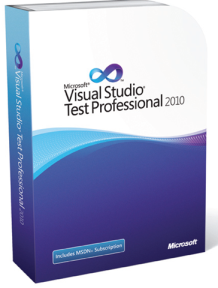
I have long wanted to "feel" Microsoft Visual Studio Test Professional live. Still, this is a product positioned by Microsoft as the main platform for testing programs created in Visual Studio (and this is my main work tool). Yes, and why should I bother to admit, by the way, the Microsoft contest that has turned up has not left me indifferent either. I ask to forgive in advance my somewhat "lamer" view of the subject of the article - I myself am a programmer, and not a tester, and I can incorrectly use some terms (and sometimes completely unscrupulous nonsense).
What is it all about?
Microsoft Visual Studio 2010 Test Professional, as written on the official website , is "a specialized set of tools for quality control teams that simplifies the planning and execution of manual tests." No more, no less. This is not a bugtracker, not a continuous integration system, not a development tool, not a unit test development environment (although VS Test Professional actively interacts with all of the above). This is what will help to create test plans, restore order to them, assign them to specific people and monitor their implementation. Plus, a little automation, a little communication testers and programmers, a little formalization of the testing procedure and some other things.
Where to get?
In order to run VS Test Professional we will need:
- Team Foundation Server (trial can be downloaded here )
- Visual Studio Team System 2010 (trial can be downloaded here )
- Itself VS Test Professional - (trial can be downloaded here )
')
Installation
You can install all these products on one computer or on different computers (but they must be online with each other). Downloading, installing and configuring all three products took me virtually a whole day. Nothing complicated, just long. This can scare away those who want to “glimpse” the product. As a defensive argument, it’s worth saying that in real life, installing these three products is done by different people, at different times, and this should be done only once.
Note from the corner
In the course of the installation, I found 5 bugs in the VS Test Professional installer:
- The message that you need to enter a 25-digit code, although no code for the trial version should not be entered anywhere (and there is nowhere to enter it)
- A strange window for selecting the installation folder that violates the principles of code reuse (Windows has its own folder selection window), Microsoft Guide for creating interfaces and the principle of symmetry of the program functions (you can create or delete a folder from the dialog, you cannot delete or rename).
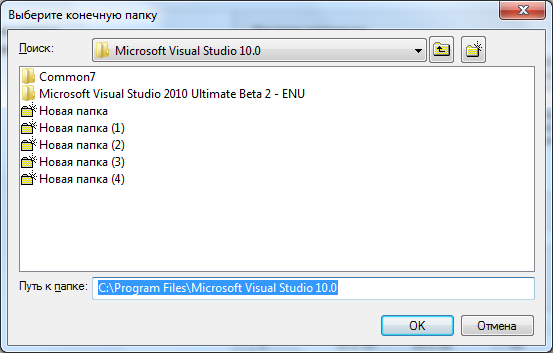
- At the end of the installation, this window appears:
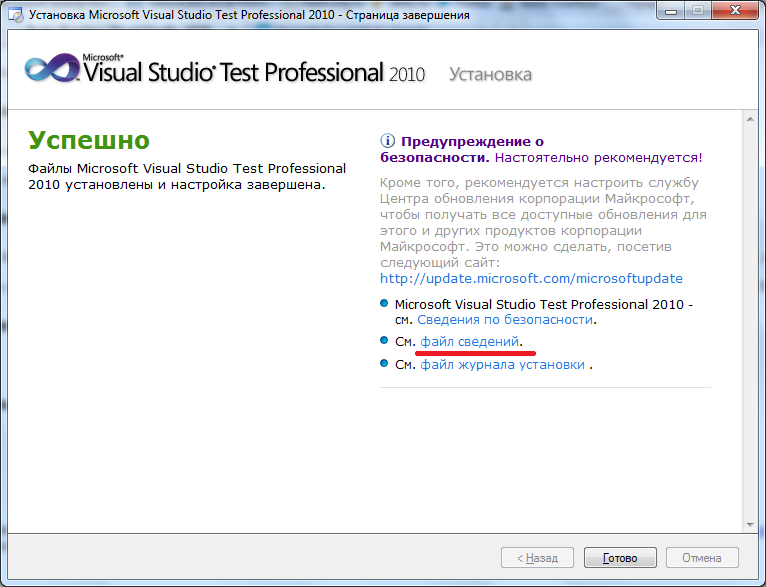
Clicking on the “Information File” in IE opens a window with a link, when you click on it in Firefox (my default browser), the file itself opens. Is it really impossible to adhere to one policy - either everywhere in IE or everywhere in the default browser? Why do I need two browsers to read one file? - In the same window there is another link - "Security Information". And she leads to the same “Information File”, in which not a word about security. Or a bug in the link, or in the document.
- My favorite bug about which I already wrote almost a year ago:
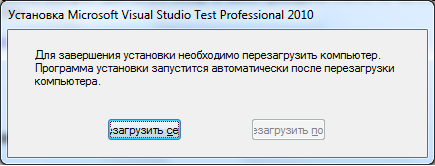
Well, okay. Little things are all.
Beginning of work
Before launching VS Test Professional, we need to connect to the Team Foundation Server using Visual Studio Team System and create a common project there (well, then what the hell did we put these programs on?). There is a whole bunch of good articles on how to do this, well, at least that 's this one . If this is not done, VS Test Professional simply will not allow us to work, since the first thing that needs to be done after its launch is to select a TFS server and a project on it, which we will test. Then a test plan is created for the project. There may be several test plans.
Note from the corner
Russification of the product leaves much to be desired - in some places the inscriptions do not fit, errors in the entered text are checked without taking into account the Russian dictionary (although the product itself is positioned as Russified)


Main window
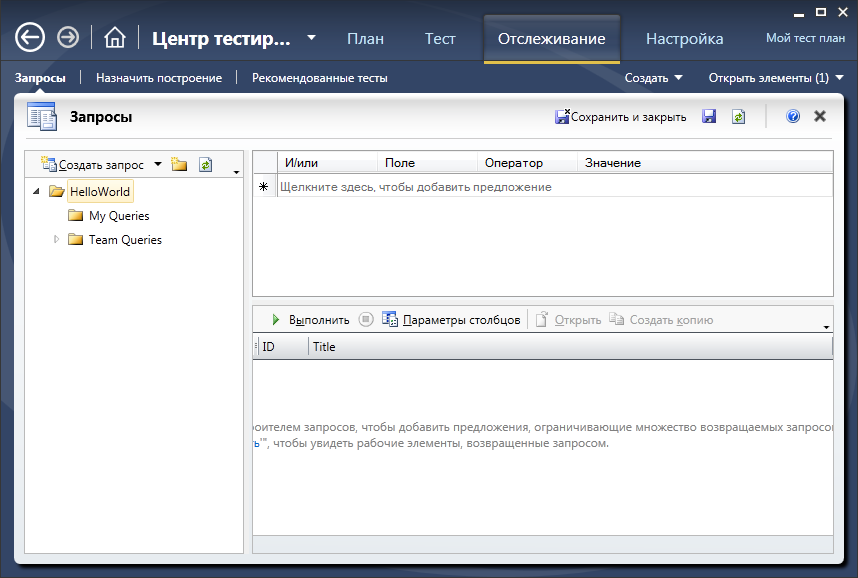
Not like anything. From Internet Explorer, he got the navigation buttons, from Visual Studio - the color scheme and the principle “project tree on the left - the workspace on the right”, from the office - the similarity of ribbon bars in the header. The first impressions of the window are “a cross between a bulldog and a rhinoceros” and “why it was not easy to make an analogue of Visual Studio”. However, over time, you adapt and become even comfortable.
The main window is divided into 2 main parts: the Testing Center and the Laboratory Center. More about them.
Testing Center
This is a window where you can add new bugs, tasks, test cases, etc. to the project. The order of work in it, in principle, is determined by the order of tabs in the upper part of the window.
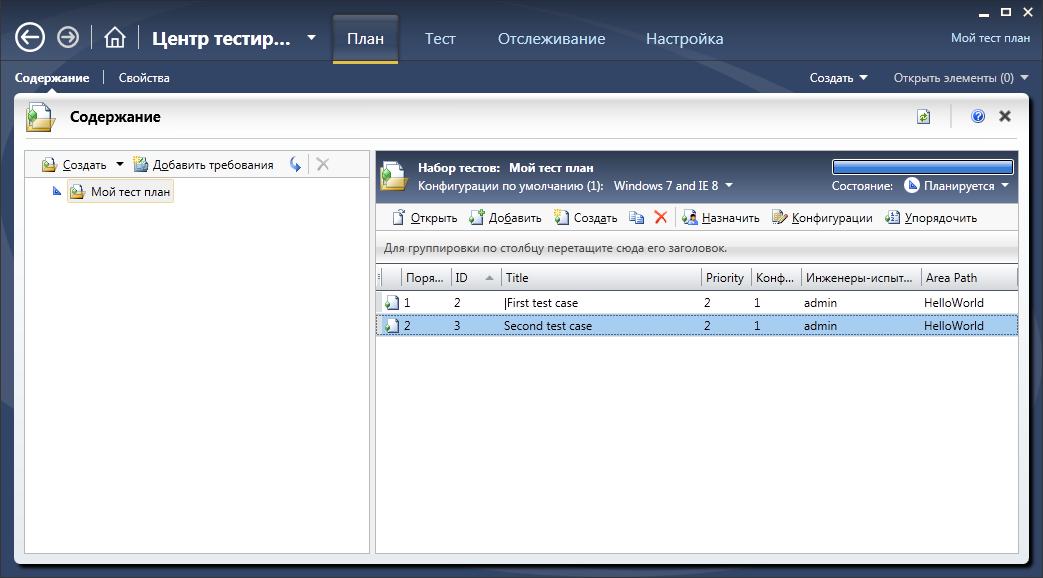
1. Create test cases on the “Plan” tab.
In each test case we describe what it checks, what needs to be done, who it is assigned to, what are the criteria for passing the test and failing it, etc. We combine test cases into sets.
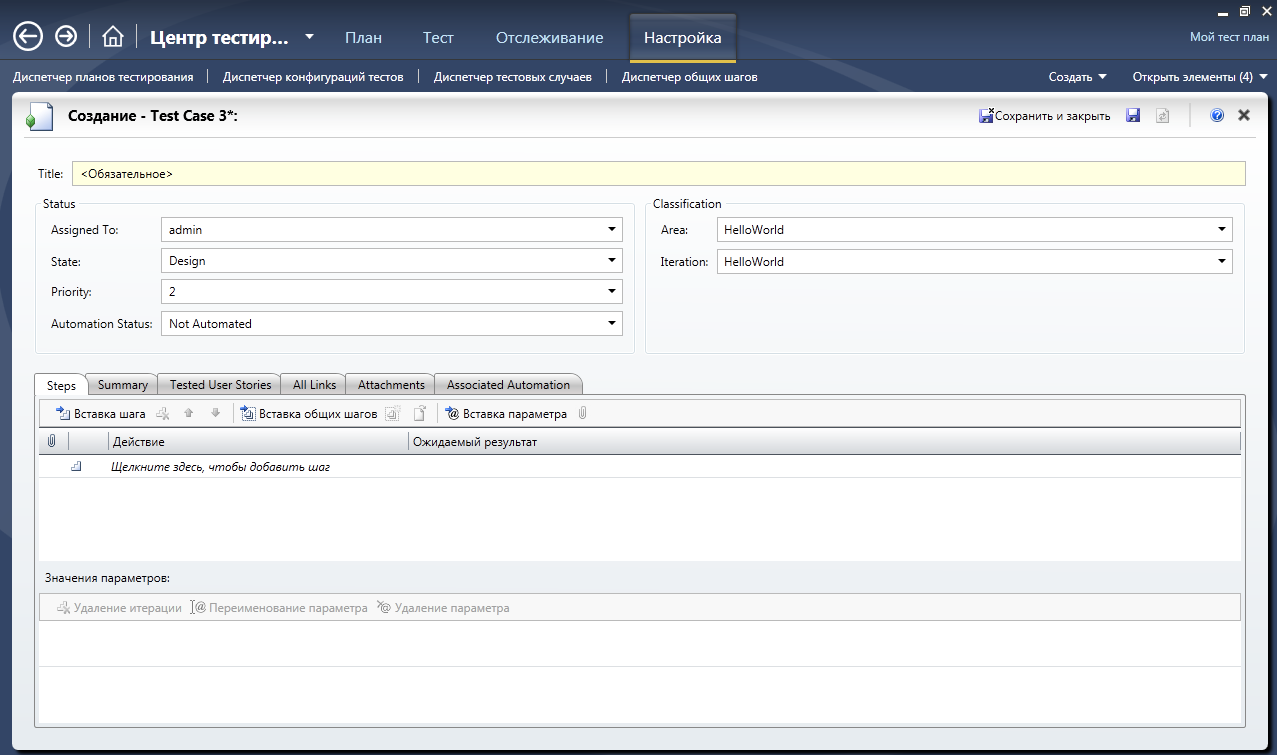
Note from the corner
As can be seen from the screenshot, the cross between Russian and English is the wildest. In general, this is the style of the entire application, not just the window.
2. Run test suites on the “Test” tab

Under the “launch” means the transition to the start mode manual reproduction of tests. The Test Manager window is minimized to the narrow bar on the left of the screen, the application under test is launched, and the Test Manager itself shows the actions that the tester must perform. Each action is designated as passed or not passed.

At this stage, you can automate the process a bit. If you press the “Create Action Record” button before the start, the test environment will record all the tester actions and then be able to reproduce them.

After the end of the test, the Test Manager collects the information that the test case creator requested. These can be screenshots of tester actions, videos, system information and some other things. All this is “stitched” to the project and can later be used by the programmer to reproduce the error and fix it.
3. We work with data on the tab “Tracking”
The third tab of the Testing Center window is designed to search for specific information (test cases, tasks, bugs, etc.) according to certain parameters. A simple Access-like query designer to a TFS server is used. Simple and understandable, but somehow not very elegant.
4. Create and customize test plans on the Settings tab
If there is more than one test plan in the project, they are created and configured here.
Laboratory Center
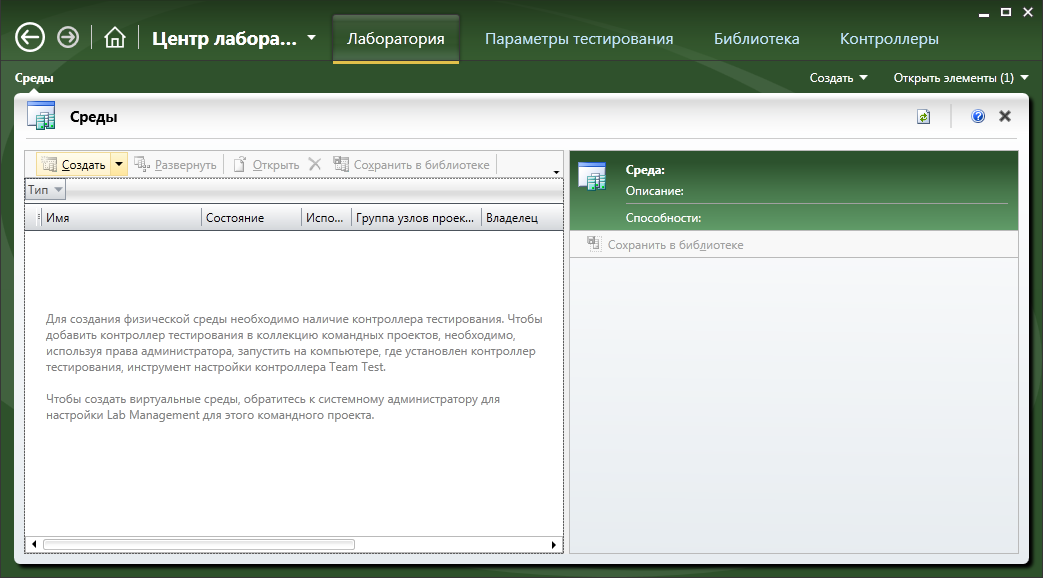
I have long understood what the Center of Laboratories is. I even read the certificate. She, by the way, in Russian and in places quite intelligible, although sometimes there are such pearls as:
“For the environment, you need to set a test controller. Each computer with a testing agent registered with this controller is called a computer and is available for use in the environment. ”
The computer is called a computer. Valuable information. Captain Evidence approves.
In short, the Center for Laboratories allows you to define a set of test environments (environment = hardware + software configuration) on which we want to test our project. The test environment can be a real physical computer with a specially installed program (testing agent) or a virtual machine. Laboratories Center allows you to flexibly configure such environments, monitor the launch of tests on them, receive test results, etc.
A couple of notes
The program interface (well, at least its Russian version) gives the impression of being incomplete. Here, for example, a couple of windows that appear during the work:

There is a help button in this window - but it does not work. Plus weird button names instead of the standard "Ok" and "Cancel."
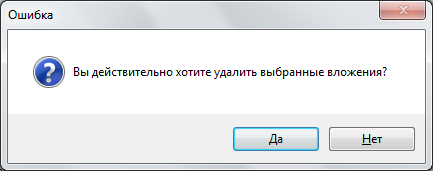
When deleting an attachment from the test case, a window pops up. An obvious mistake in the title - there must be a "question" or "confirmation" - and not a mistake at all.
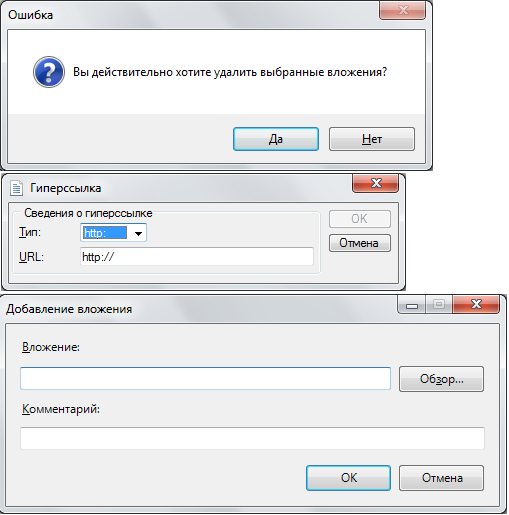
Estimate the size of the standard buttons "Ok", "Cancel", "Yes" and "No" in the three dialog boxes that are called from the same tab of the program. They are all different.
findings
The product has left me with mixed impressions.
On the one hand, the system of testing, its formal procedure, requirements for information provided during testing, etc., are very well thought out. It can be seen that people really thought how to make a product that allows a large group of programmers and testers to interact effectively. Everything is logical and in place.
On the other hand, the devil-may-care attitude to the interface and localization, high system requirements (on my laptop configuration 2 Gb RAM \ 2 GHz dual-core processor, some windows open for 10-15 seconds, while the usual studio works fine), focus only on large projects (for small project infrastructure maintenance costs and the price of the product will be too high).
VS Test Professional certainly has its niche in the market, but to say that it fits all and closes all testing tasks will be wrong.
Source: https://habr.com/ru/post/113638/
All Articles